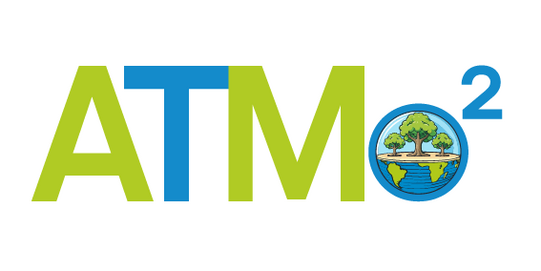ATMo2 (incentive-based transformation and modeling of mobility behavior)
The ATMo2 project (incentive-based transformation and modeling of mobility behavior) of the two Ruhr area universities of Duisburg-Essen and Dortmund is developing and testing low-investment options for an incentive-based change in mobility behavior. The effectiveness of different measures is being researched, i.e. the question of which forms of incentives (“nudges”) work for which population groups and in what way. This will help to develop instruments for gentle behavioral control that are not only effective (in terms of climate protection) and economically viable, but are also accepted by those affected.

Ministry of the Environment, Nature Conservation and Transport of the State of North Rhine-Westphalia (MUNV)
The current sustainability goals, not only in NRW, can only be achieved if the transport sector also makes substantial contributions to reducing climate-damaging greenhouse gases. Considerable efforts must be made in this area over the next few years in order to achieve not only a turnaround in propulsion systems, but also a genuine turnaround in transport and mobility.
The ATMo2 project (incentive-based transformation and modeling of mobility behavior) of the two Ruhr area universities Duisburg-Essen and Dortmund will contribute to this by developing and testing low-investment options for an incentive-based change in mobility behavior. The effectiveness of different measures will be researched, i.e. the question of which forms of incentives (“nudges”) work for which population groups and in what way. This will help to develop instruments for gentle behavioral control that are not only effective (in terms of climate protection) and economically viable, but are also accepted by those affected.
The ATMo2 project builds on knowledge gained in the InnaMoRuhr project, existing from 2020 to 2023, with a focus on the UA Ruhr universities. In particular, it uses the sociological and economic model of mobility behavior, which identifies mechanisms and influencing factors that shape people's everyday actions. In addition, the ATMo2 project will use the research infrastructure developed in the InnaMoRuhr project, which consists of a tracking app and several simulators in which mobility in the Ruhr region is modeled and simulated on an interdisciplinary basis.
In addition, the project is based on the results of the “ATMo2 feasibility study”, which was also funded through this funding guideline and developed structural preliminary work for the project applied for here in the same consortium.
Prof. Dr. Jürgen Howaldt (Coordinator), TU Dortmund University, Social Research Center Dortmund
Prof. Dr. Johannes Weyer, TU Dortmund University, Social Research Center Dortmund
Prof. Dr. Petra Stein, University of Duisburg-Essen, Institute for Sociology
Prof. Dr. Frank Kleemann, University of Duisburg-Essen, Institute for Sociology
Prof. Dr. Heike Proff, University of Duisburg-Essen, Chair of General Business Administration & International Automotive Management
Prof. Dr. Pedro José Marrón, University of Duisburg-Essen, Chair of Networked Embedded Systems
The ATMo2 project is based on a mixture of social science research methods. On the one hand, standardized surveys are used to determine the initial situation and mobility preferences within the population. In-depth interviews are also used to incorporate the views of relevant stakeholders and experts.
In addition, the developed incentive mechanisms are tested in advance as part of agent-based simulation experiments and then tested in real-life experiments in a realistic environment using a dedicated app. In this way, actual usage and mobility data can be enriched with survey data and jointly evaluated.
1) Mobility behavior: Further development of the sociological or economic model of mobility behavior developed in the InnaMoRuhr project, which explains people's everyday actions through their individual preferences, attitudes, lifestyles, etc. as well as through their subjective perception of mobility offers.
2) Actor types: Typification of actors in order to identify starting points for targeted influencing of behavior in this way.
3) Modeling of a business model: Further development of the network (ecosystem) of mobility providers developed in the InnaMoRuhr project and the business model of the coordinator (orchestrator) of this mobility ecosystem by taking integrated incentive mechanisms into account; to this end, expansion of the ecosystem to include necessary partners from other sectors (e.g. local companies or cities).
4) Nudging: Development of a nudging concept for the area of mobility and transportation that builds on findings from governance research and the sociological and economic theory of controlling complex systems.
5) Integration: Conceptual and methodological linking of the nudging concept with the model of mobility behavior, the business model and the Ruhr area transport model developed as part of the InnaMoRuhr project.
6) Data basis: Collection of data on mobility practices and mobility offers through interviews and surveys. In addition, use of tracking data collected with the help of the mobility app developed in the InnaMoRuhr project, which may be slightly modified here.
7) Calibration of the models: Calibration of the behavioral model, the business model and the Ruhr area traffic model with real data.
8) Simulation experiments: Implementation of simulation experiments in which the effects of nudging mechanisms are systematically researched.




![[Translate to English:] [Translate to English:]](/storages/zentraler_bilderpool/_processed_/a/f/csm_Kontakt_b86e8d8ecc.png)
![[Translate to English:] [Translate to English:]](/storages/sfs-sowi/_processed_/6/c/csm_Glasfront_sfs_Header_eae6d325d3.jpg)
